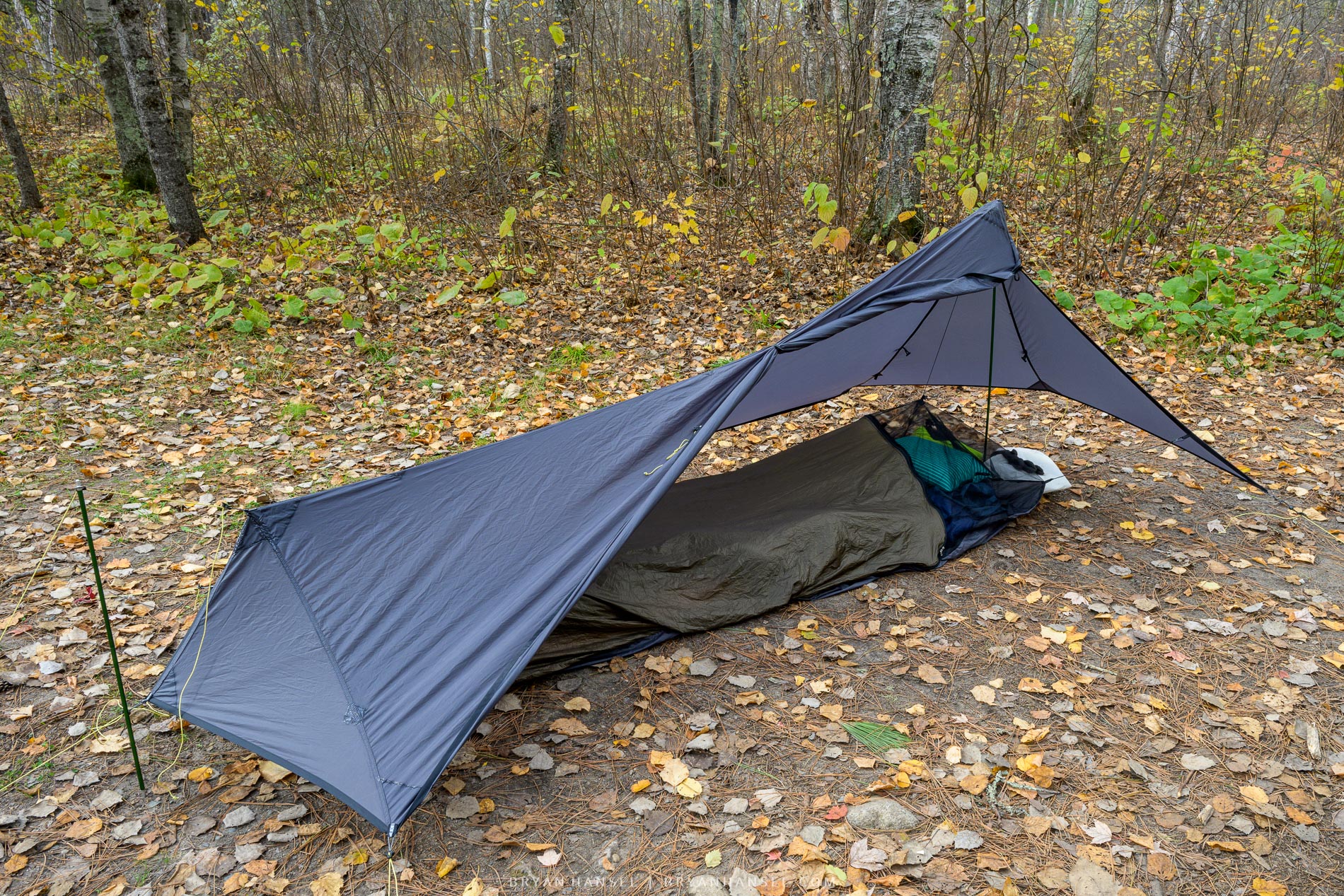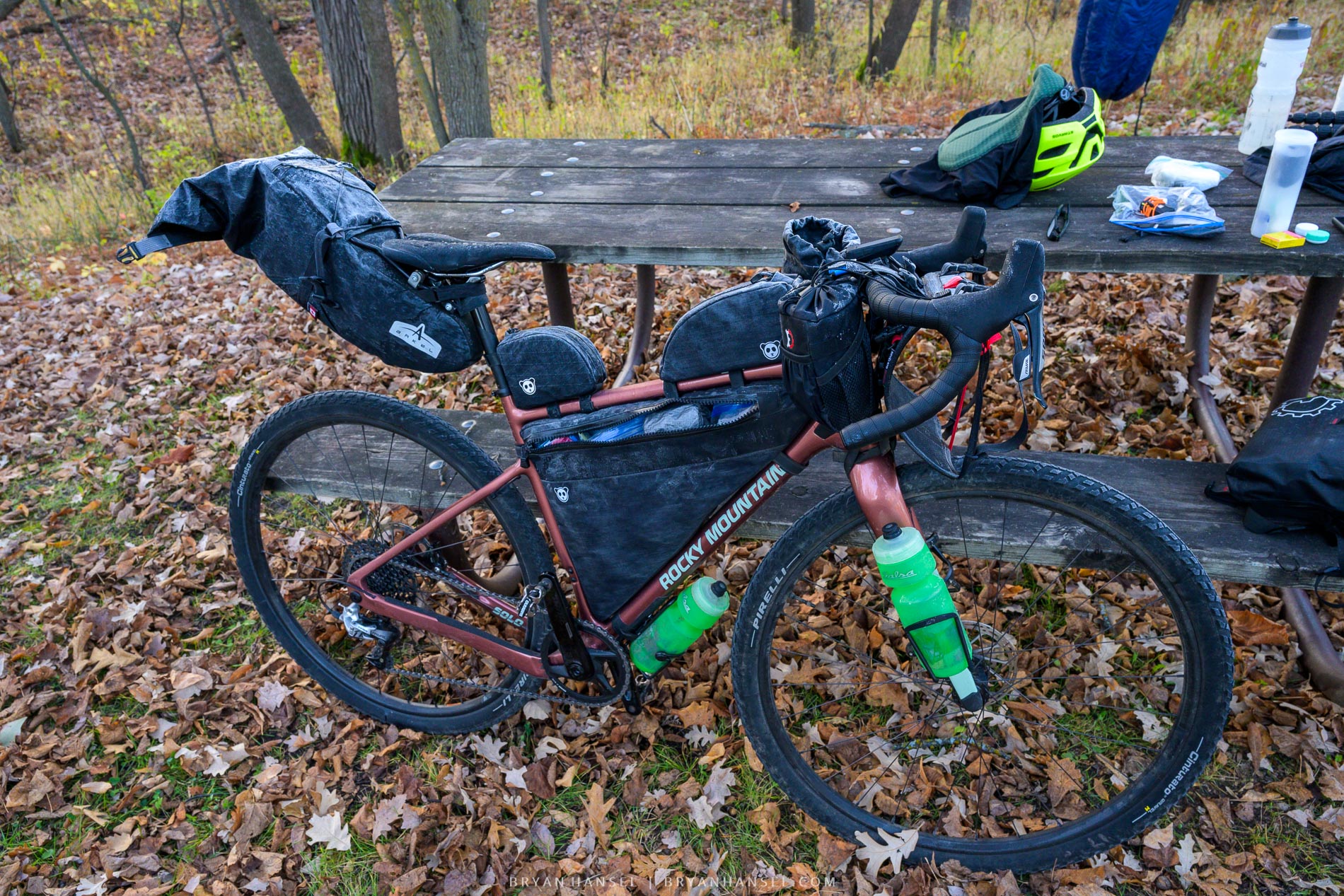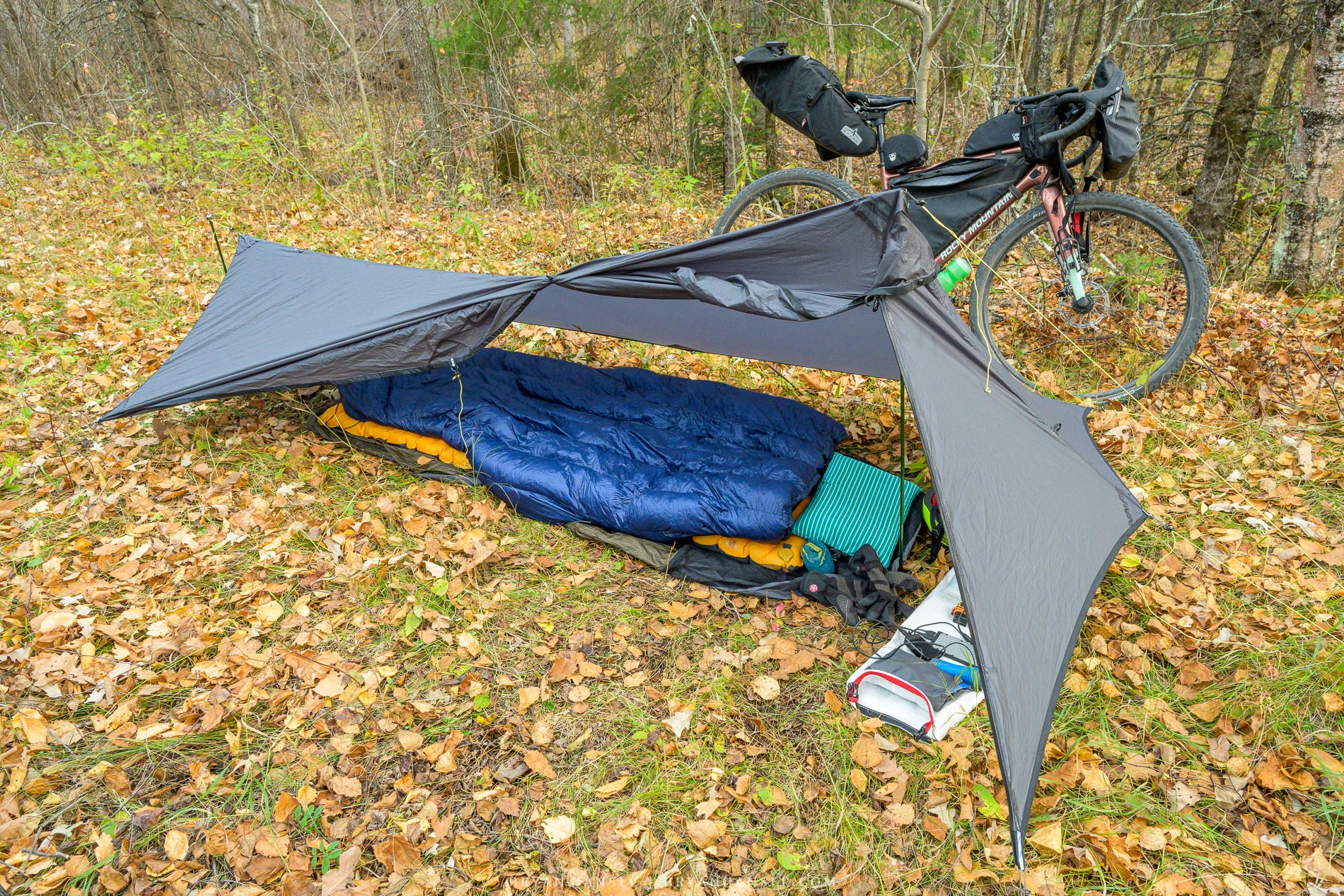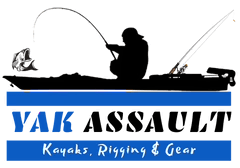Borah Gear Ultralight Bivy Review
We may earn commissions if you shop through the links below.
The Borah Gear Ultralight Bivy is a lightweight sack to put your sleeping bag, sleeping pad and self into while you sleep. How else do you describe a bivy? It’s designed to shelter you, protect you from splashes and drafts and add a little warmth to your sleeping bag. It also has bug netting above your face to help you breath and keep the bugs out. I bought it to provide a little extra protection when sleeping under a small tarp. I used this in 2023 on a ten-day bikepacking trip, and I would call this a limited review. That said, I probably won’t be using it often due to the limitations and I’m doubtful that I’d use this on a paddling trip. I purchased this for myself.

Features
This bivy is made from Argon, which is a ripstop DWR-treated nylon fabric. It comes in two weights of fabric. I got the lighter Argon67 to save weight. Argon is supposed to shed splashes easily and is supposed to be breathable. There are multiple zip options. I went with the side zip version, which was a little heavier but made it easier to get into and out of. There are also different size options. I believe I went with Standard/Wide option, but I don’t remember. Each corner has a stakeout point, and there is a pull tab for pulling the bivy off your face. There’s a big no-see-um netting top.
The bivy seems well made and looks like it would last a long time.
Weight
Mine weighs about 5.5 ounces and packs down to the size of a softball.
Using the Borah Gear Ultralight Bivy
I used this on a 625-mile bikepacking trip that I took in October of 2023. There were several nights below freezing but most were close to freezing. I ran into a couple of issues.
On the first night of my trip, it got below freezing. I camped at a state park campground near a stream, and the campsite was low compared to the surrounding “hills.” I was under a tarp, but there wasn’t any wind. In the morning I woke up with a layer of thin ice on the outside of my sleeping bag and inside of the bivy. It was mainly up near my head and chest, but it was also down near my feet. I was using a down quilt to sleep in. With the moisture and ice on my sleeping bag, I ended up getting as much of the ice off of my sleeping bag as possible and then delaying leaving until the sun dried my bag and all of the ice off of my bag. This made for a hard 80-mile day. The late start put me into camp after a day of riding gravel just before sunset.

I didn’t trust the bivy for the next night, so I didn’t use it. But on the third night, I used it again while camping near a river on an elevated bank that was higher than the surrounding areas. It stayed above freezing that night. When I woke in the morning there was condensation on the shell of my sleeping bag and under the bivy. I used a tarp this night as well. The sun wasn’t going to hit where I was camped for hours, so I packed up the sleeping bag and didn’t worry about it. It wasn’t nearly as much water as the night of the ice.

Both of those nights had little wind.
After that I just used it as something to sleep on until near the end of the trip. On the second to last night, I used it by itself while sleeping inside an enclosed picnic shelter. It was well below freezing that night. I was sleeping in all my clothing and wanted to add a little extra warmth. While I was camped near a lake, the inside of the picnic shelter didn’t get any frost or condensation like the grass outside did. The bivy worked fine then.
I wondered if I had done something wrong and wrote the owner of the company. He wrote back, “On some evenings where it’s humid and flirting with freezing, make sure to have the mesh elevated as much as possible, and try your best to keep your face in the netting portion while sleeping. I know on the rare nights I personally end up with some condensation, are usually right around freezing and when I find myself waking up tucked below the netting, in the fabric portion. Then its hard for the bivy to ventilate your breath during the night. Airflow is key on those nights, and site selection with that in mind can really help, too.”
That explained away the issues I was having. I bought this bivy to use in those types of conditions in the late fall or early spring when there aren’t any bugs to worry about. But because most of my shoulder season trips are near water with limited to no ability to select a campsite I can’t see myself using this often. It might work better in the mountains or areas where you can pick and choose from campsites and get away from areas that will experience condensation. But in canoe country, there aren’t those types of options.
Conclusion
It’s hard to form a conclusion about an item that failed me on two out of three nights. I think it was more likely the locations and conditions that I used the bivy in. The bivy can’t handle those conditions. In the future should I use a tarp and want a bivy, I’d likely just bring Borah Gear’s Cuben Bug Bivy. While it wouldn’t add as much warmth, the netting would protect against a little spray and a little wind. In the fall, I’ll likely just switch back to a ground cloth if using a tarp.
This is a well-made bivy, but you’ll want to make sure you’re using it in the right places and right temps.
As a side note, I did love Borah Gear’s Cuben Stuff Sacks. They are a great price and good size.
